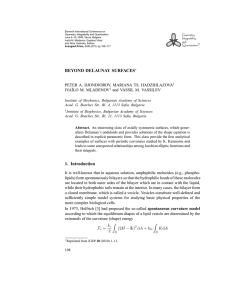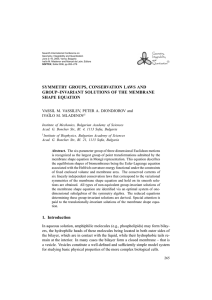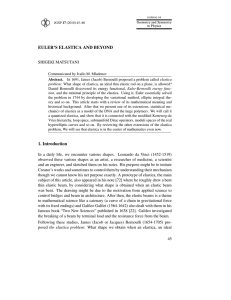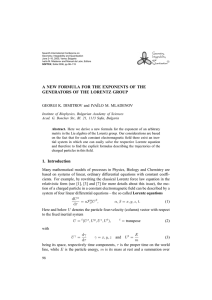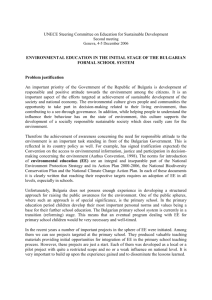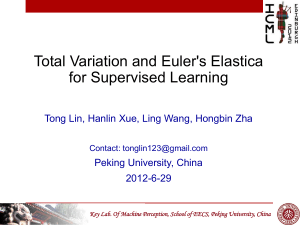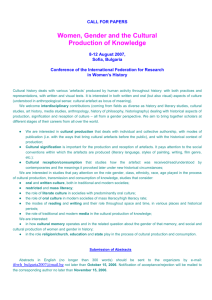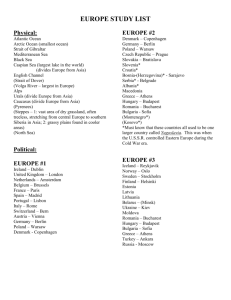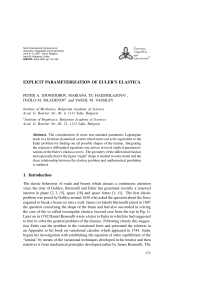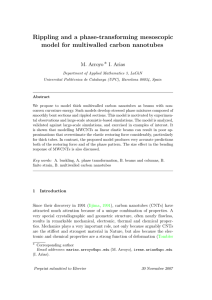Geometry,
advertisement
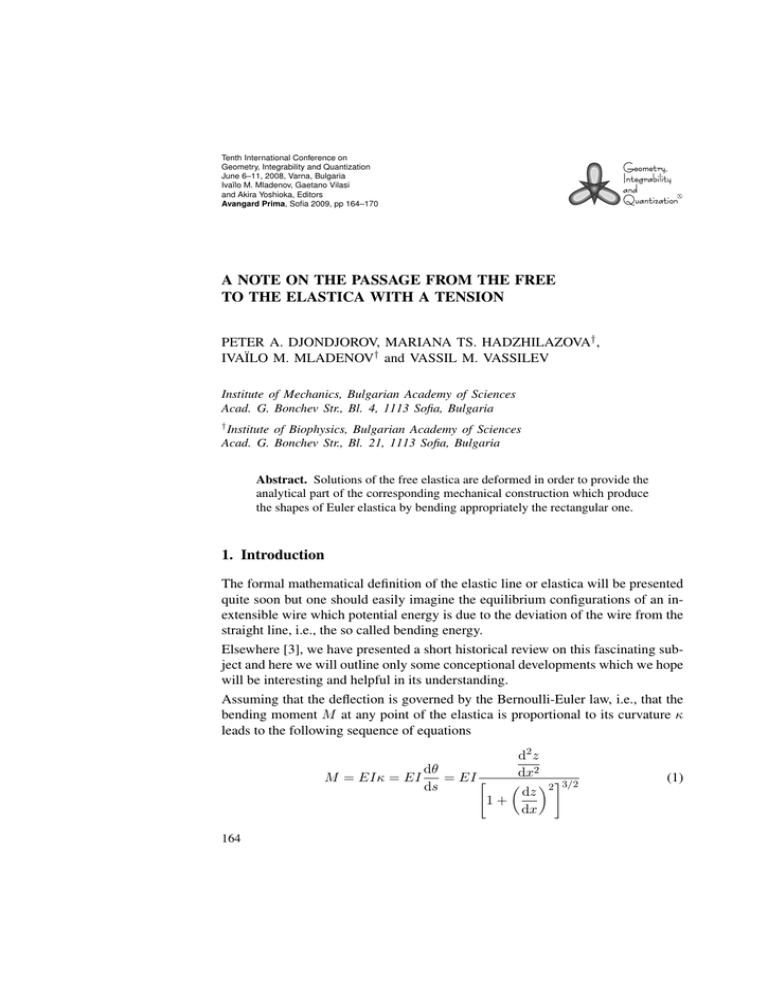
Tenth International Conference on Geometry, Integrability and Quantization June 6–11, 2008, Varna, Bulgaria Ivaïlo M. Mladenov, Gaetano Vilasi and Akira Yoshioka, Editors Avangard Prima, Sofia 2009, pp 164–170 Geometry, Integrability and X Quantization A NOTE ON THE PASSAGE FROM THE FREE TO THE ELASTICA WITH A TENSION PETER A. DJONDJOROV, MARIANA TS. HADZHILAZOVA† , IVAÏLO M. MLADENOV† and VASSIL M. VASSILEV Institute of Mechanics, Bulgarian Academy of Sciences Acad. G. Bonchev Str., Bl. 4, 1113 Sofia, Bulgaria † Institute of Biophysics, Bulgarian Academy of Sciences Acad. G. Bonchev Str., Bl. 21, 1113 Sofia, Bulgaria Abstract. Solutions of the free elastica are deformed in order to provide the analytical part of the corresponding mechanical construction which produce the shapes of Euler elastica by bending appropriately the rectangular one. 1. Introduction The formal mathematical definition of the elastic line or elastica will be presented quite soon but one should easily imagine the equilibrium configurations of an inextensible wire which potential energy is due to the deviation of the wire from the straight line, i.e., the so called bending energy. Elsewhere [3], we have presented a short historical review on this fascinating subject and here we will outline only some conceptional developments which we hope will be interesting and helpful in its understanding. Assuming that the deflection is governed by the Bernoulli-Euler law, i.e., that the bending moment M at any point of the elastica is proportional to its curvature κ leads to the following sequence of equations d2 z dθ dx2 M = EIκ = EI = EI " #3/2 ds dz 2 1+ dx 164 (1)
